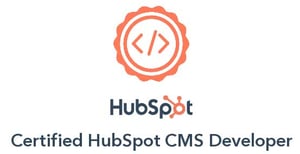Website Performance Optimization
What is web performance optimization?
Website performance optimization is the process of improving website speed, reliability, and user experience by optimizing code, images, and other elements.
It involves analyzing the current state of a website to identify areas for improvement, then implementing changes such as minifying code, reducing image sizes and reducing requests made to the server.
In addition to improving page loading time, performance optimization can help reduce server load, improve user engagement and reduce bounce rate. Optimizing a website may also involve caching static content, compressing files and utilizing CDNs (content delivery networks) to reduce latency in content delivery. All these steps help create a better user experience which leads to increased conversions and revenue.
01
Page Speed Optimization
By implementing these activities, a website can significantly improve its page speed, which can lead to a better user experience, increased engagement, and improved search engine rankings.
Page speed optimization refers to the process of improving the load time of a website's pages, and can include a variety of activities such as:
-
Minifying and compressing resources
Compression of files such as HTML, CSS, and JavaScript files to reduce their file size and speed up download time. -
Optimizing images
Reducing their file size, and using the appropriate image format for the web. -
Using a content delivery network (CDN)
Distribute content to users from a location that is geographically closer to them. -
Reducing the number of HTTP requests
Combining files, using CSS sprites, and more. -
Lazy loading for images
Ensure images are only loaded as they are needed, rather than loading all images at once. -
Implementing code splitting and dynamic imports
Load only the necessary resources for each page. -
Implementing HTTP/2
Provides faster page loading by allowing multiple resources to be loaded in parallel. -
Identifying and removing any unnecessary or heavy scripts
Including third-party plugins or widgets.
02
On-Page Search Engine Optimization
By implementing these activities, a website can improve its visibility and rankings in search engine results pages (SERPs) and attract more organic traffic to their website.
On-page search engine optimization (SEO) refers to the process of optimizing individual web pages in order to rank higher and earn more relevant traffic in search engines. The activities involved in on-page SEO include:
-
Keyword research
Identifying the keywords and phrases that are relevant to the content of the page and that potential users might use to search for it. -
Content optimization
Ensuring that the content of the page is high-quality, relevant, and includes the targeted keywords. -
Meta tags optimization
Writing compelling meta titles and descriptions that include the targeted keywords and entice users to click through to the page. -
Headings optimization
Using headings (H1, H2, etc.) to structure the content of the page and include the targeted keywords. -
Internal linking
Linking to other relevant pages on the website in order to help search engines understand the structure of the site and the importance of individual pages. -
URL optimization
Creating simple and descriptive URLs that include the targeted keywords. -
Image optimization
Optimizing images by compressing them, reducing their file size, and using descriptive file names and alt tags that include the targeted keywords. -
Mobile device optimization
Ensuring that the website is mobile-friendly and responsive, as mobile optimization is an important ranking factor.
03
Conversion Optimization
By implementing these activities, a website can increase the number of visitors who take a desired action and increase the overall conversion rate.Website conversion optimization refers to the process of increasing the number of website visitors who take a desired action, such as making a purchase, filling out a form, or signing up for a newsletter. The activities involved in conversion optimization include:
-
A/B and multivariate testing
Testing different variations of web pages, headlines, images, and calls-to-action to determine which elements drive the most conversions. -
Heat mapping and click tracking
Analyzing user behavior on the website to understand where users are clicking and how they interact with different elements of the page. -
Landing page optimization
Optimizing the design, layout, and content of landing pages to improve conversion rates and reduce bounce rates. -
Form optimization
Simplifying forms, reducing the number of fields, and providing clear instructions to improve the user experience and increase the likelihood of a conversion. -
Call-to-action optimization
Testing different wording, placement, and design of calls-to-action to identify which elements are most effective in driving conversions. -
Personalization
Tailoring the website content, layout and messaging to the different segments of visitors based on CRM data for better engagement and conversion. -
Optimizing for mobile
Ensuring that the website is mobile-friendly and responsive, as mobile optimization is an important factor in driving conversions.
⭐ ⭐ ⭐ ⭐ ⭐
Drive Agency is a true partner for collaborative and strategic HubSpot web development & technical consulting.
